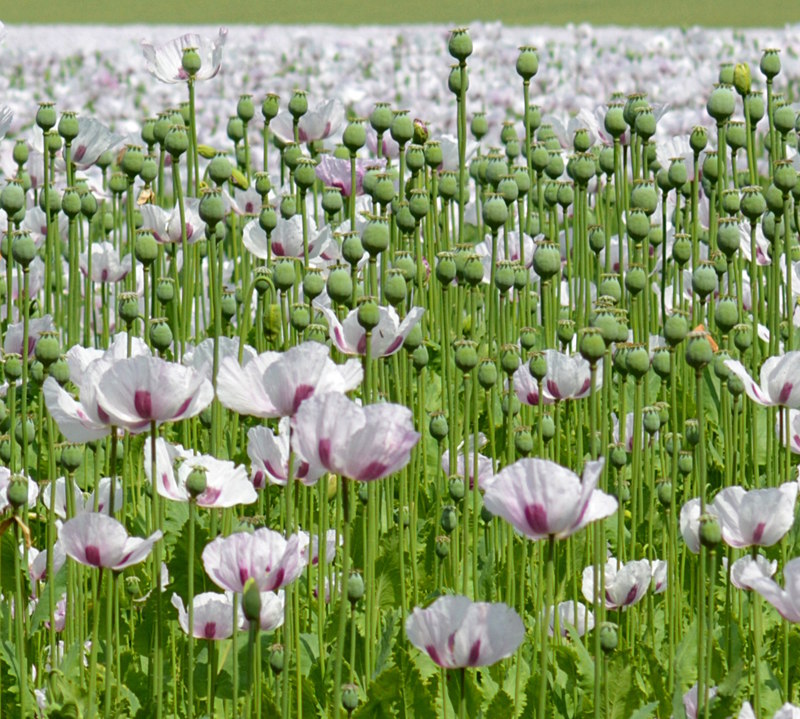Latex, Opium, Sap, Gum and Resin

Opium Poppies – Geograph – Pods of the opium poppy at Woodcote, Oxfordshire
Latex
Dried latex is obtained from the seed capsules of Papaver somniferum aka the opium poppy. Morphine, heroine and codeine are all derived from the alkalides in the latex. Latex is natural rubber.
Many plants produce forms of latex rich in isoprene polymers including spurges, dandelions, ficus elastica, lettuce and chicle. Two most useful latex derived products are chicle for chewing gum and Hevea brasiliensis the rubber tree that is tapped to provide the latex for natural rubber production.
Latex can cause allergic reaction as gardeners with euphorbia may know from skin rashes
Sap
Tree Sap is obtained from maple, birch, or walnut trees and is a liquid less viscous than honey comprised mostly of water and sugars. Sap from a tree is made of sugar and water carried in the trunk cells.
Maple syrup comes from maple trees in the form of sap that is harvested in drips, from incisions in the bark, into a bucket hung from a tap hammered into the tree.
Sap has antiseptic qualities that can keep wounds from getting bacterial infections. Thus sap can make wound dressings or when boiled down it becomes a sticky tar-like substance used for waterproofing (it’s believed by some that Noah used ‘pine pitch’ to waterproof the Ark)
Resin
Resin is a liquid found in the outer cells particularly of the Pinaceae family like pine, fir and cedar trees. Resin may be the trees way of removing waste products from the heartwood.
Resin is a sticky solid form of secretion that is highly valued for their chemical properties with various uses including the distillation of turpentine.
Amber is the fossilized resin from ancient forests.
Gums
Eucalyptus trees can produce a highly aromatic oil used for cleaning, as an antiseptic and cough medicine. Gum arabic is a natural gum made from the hardened sap of some varieties of Acacia trees. Its main uses are in the food industry.